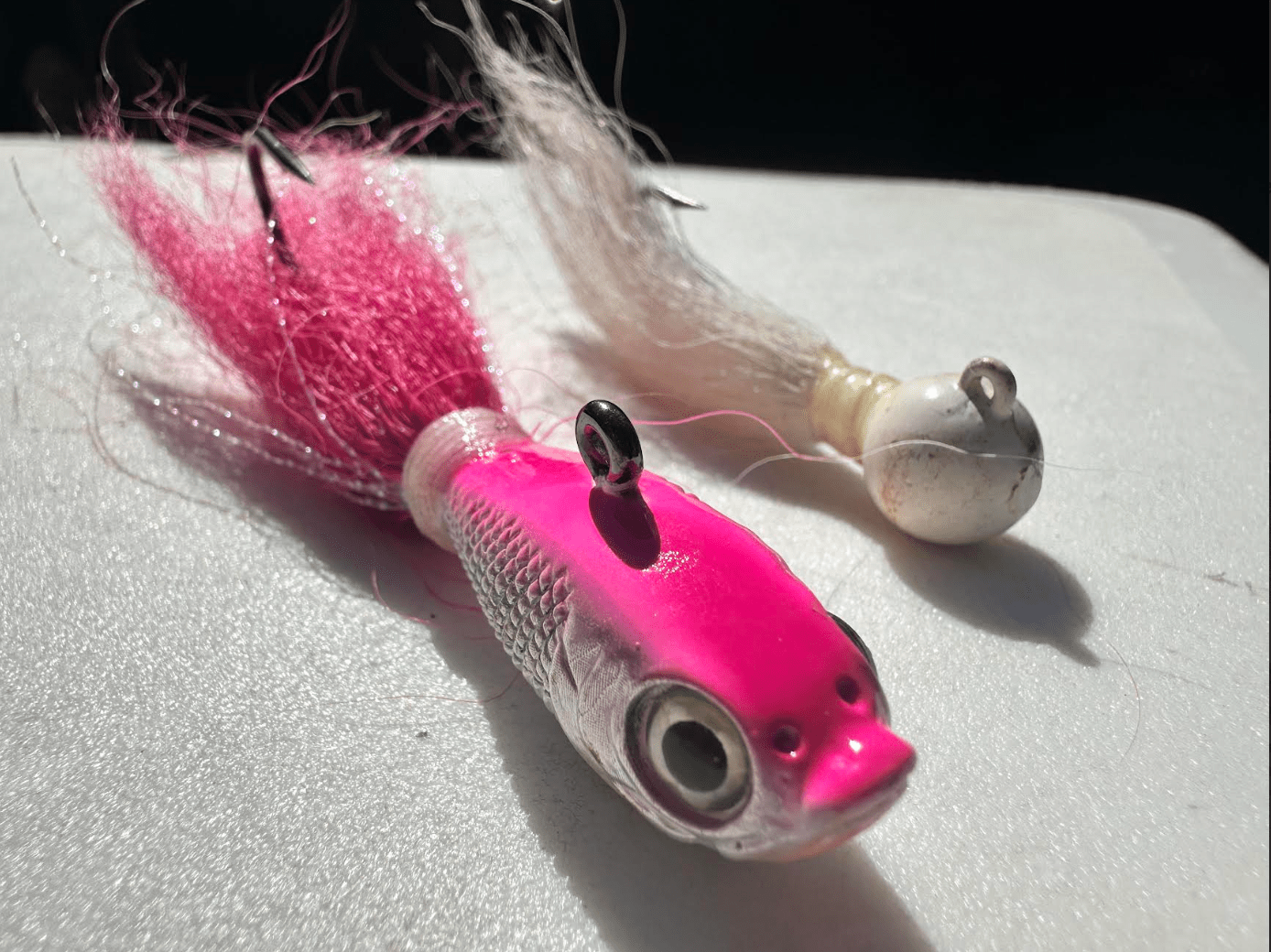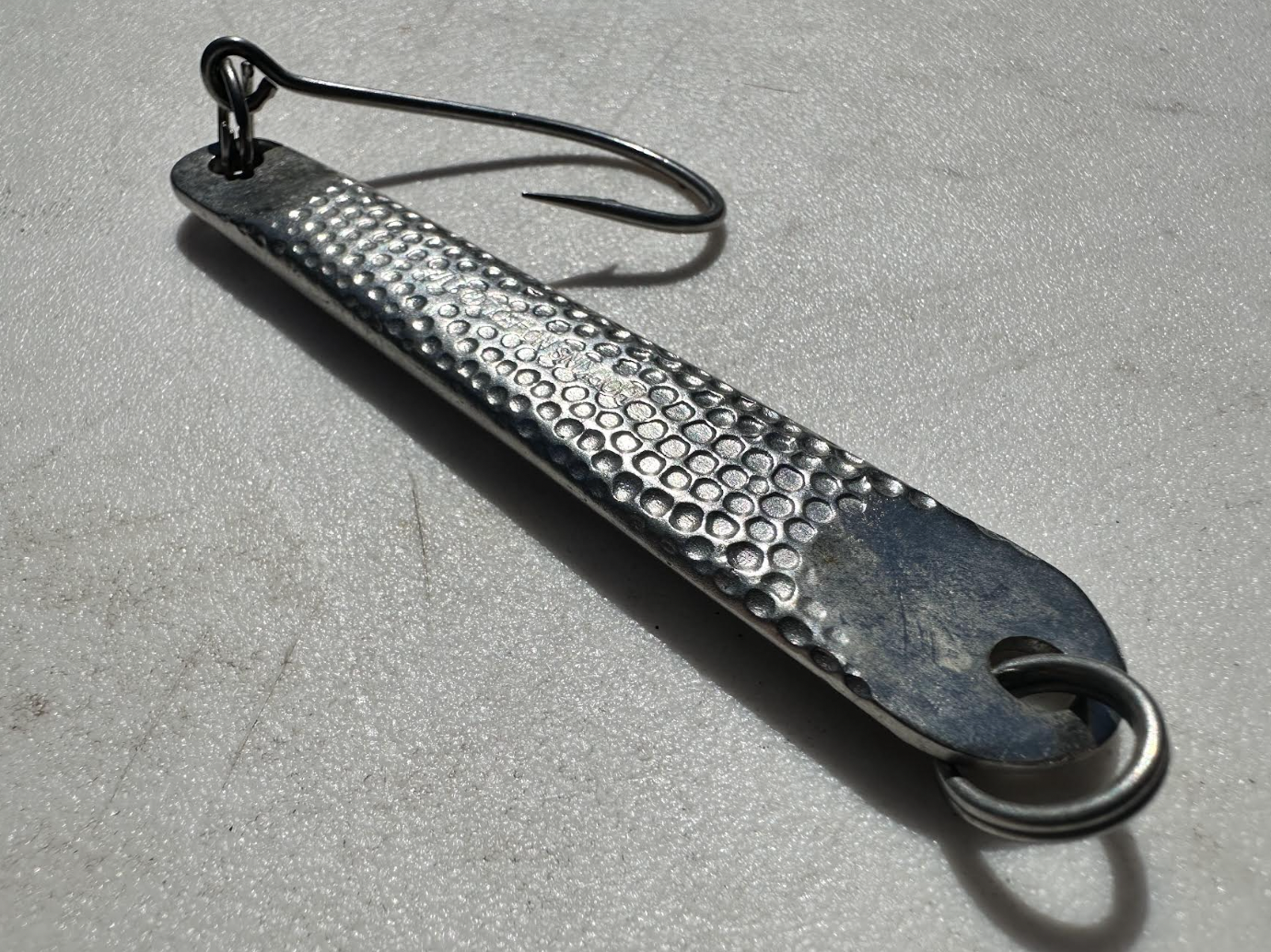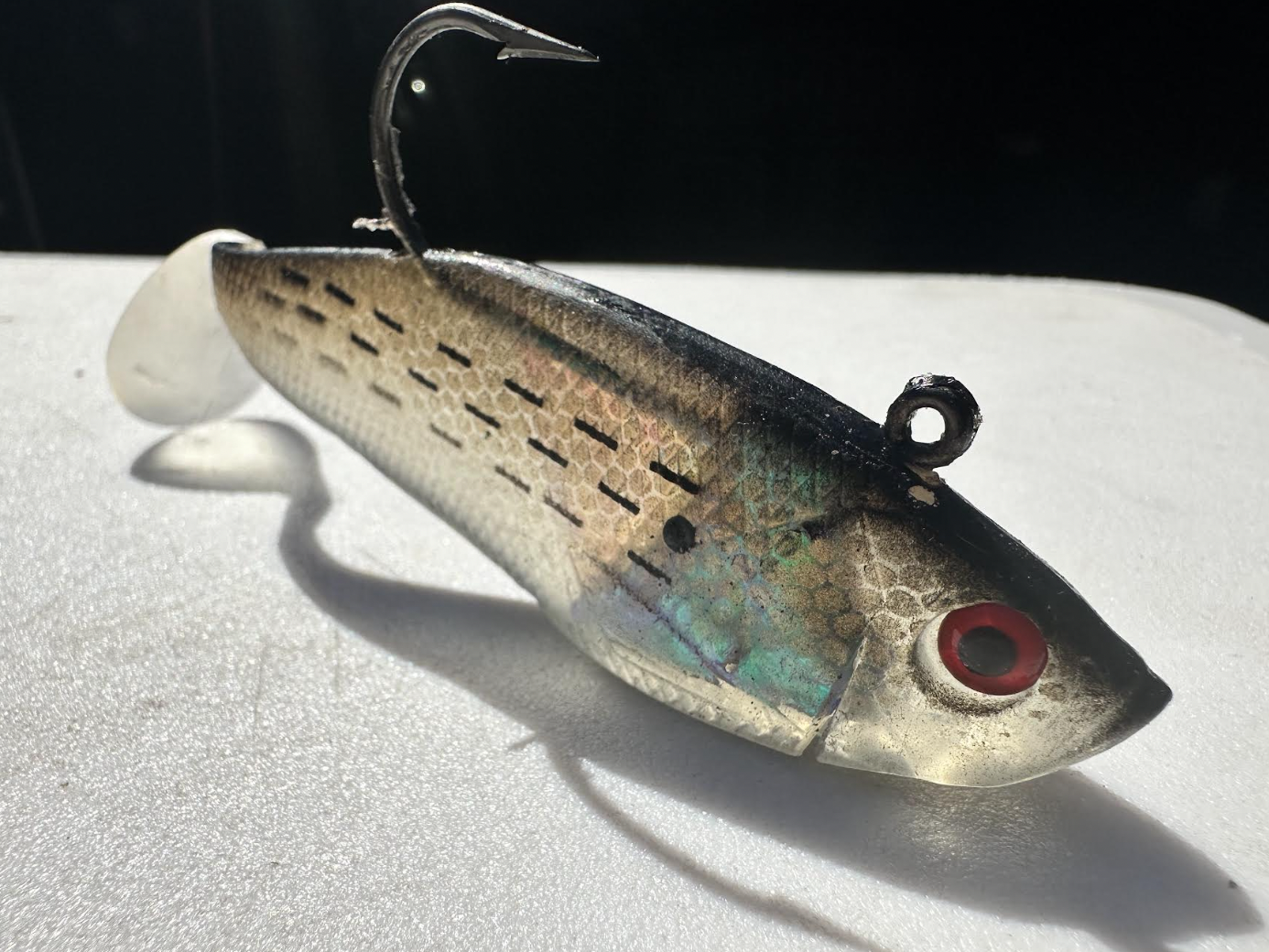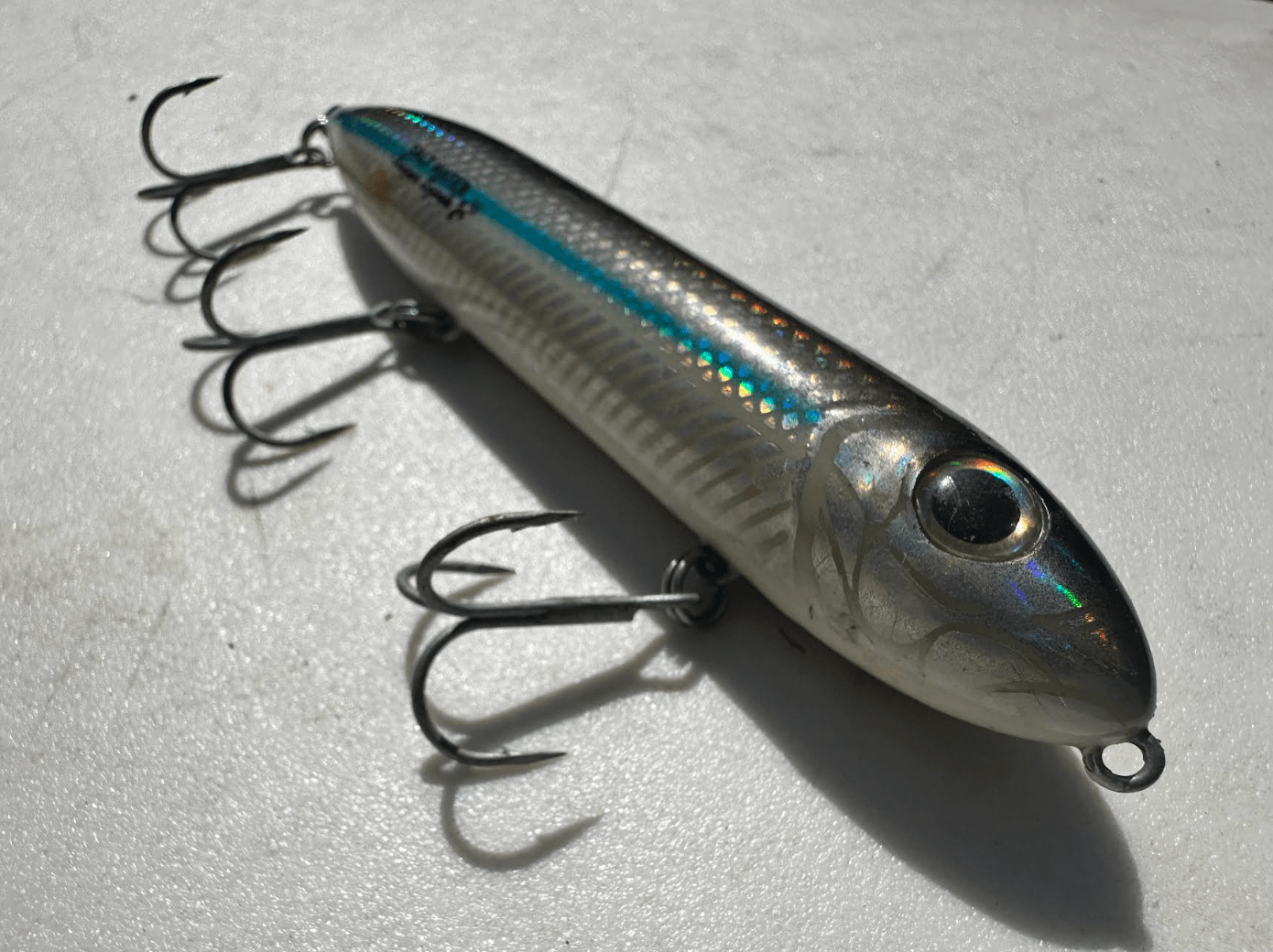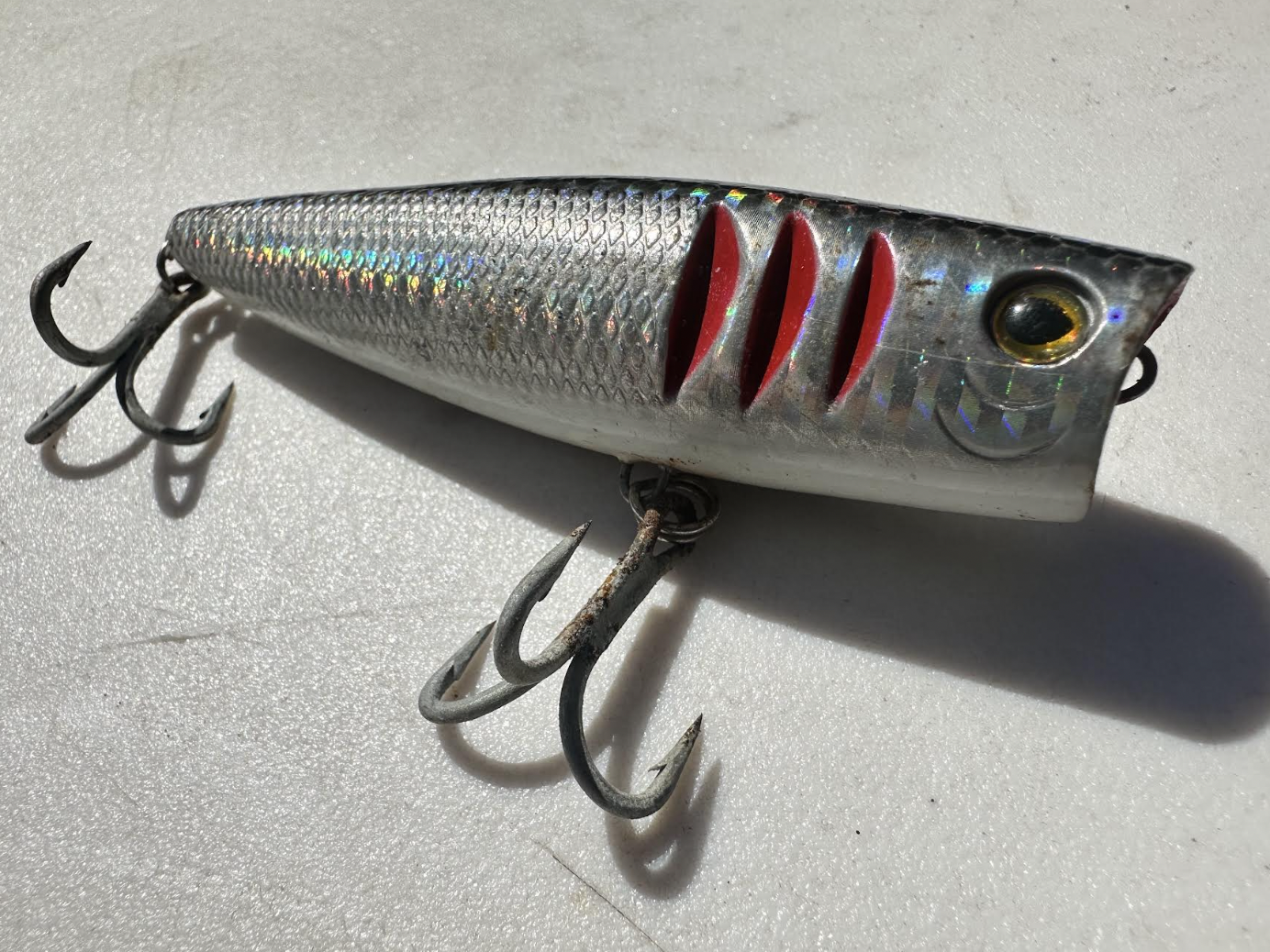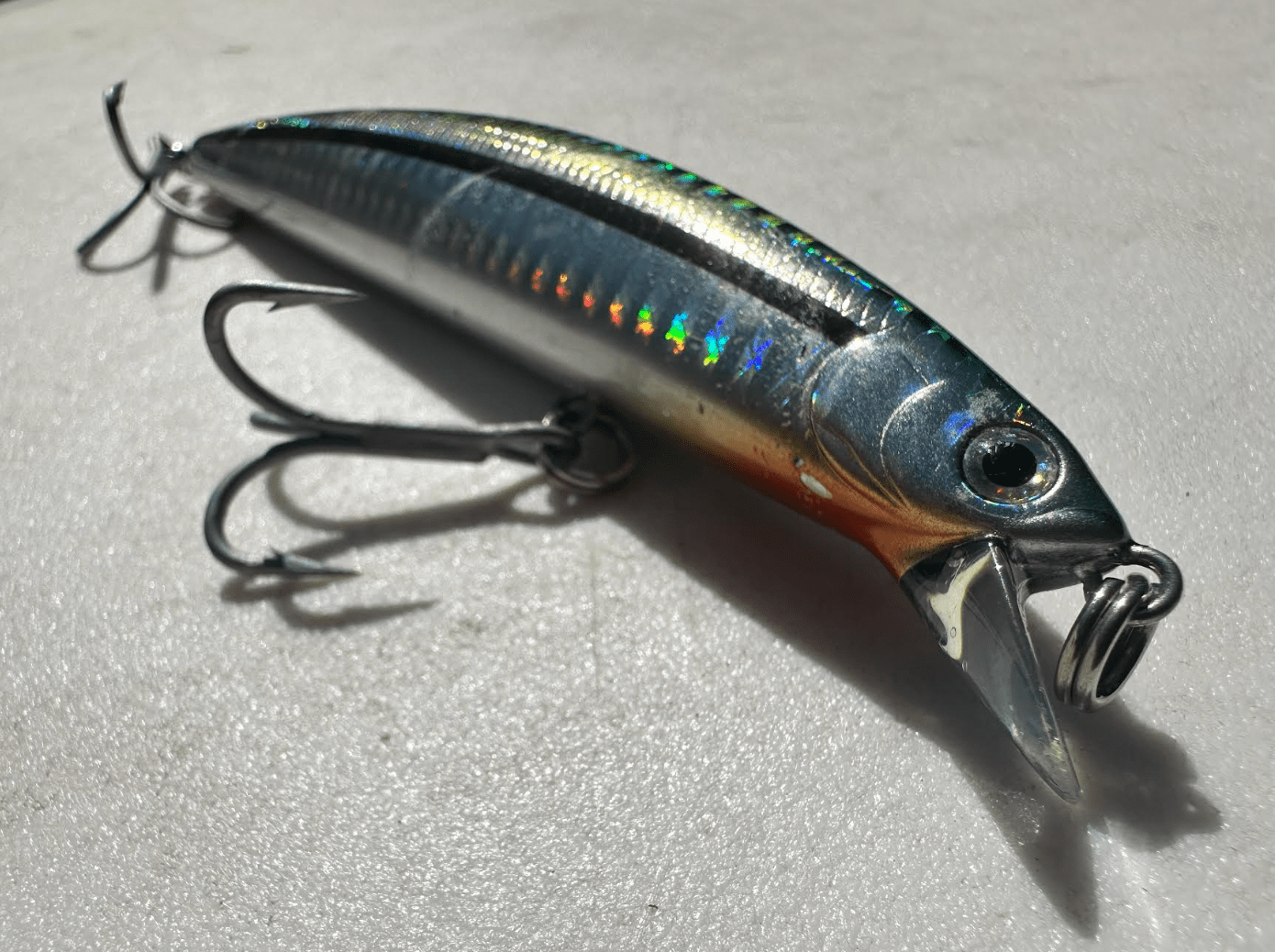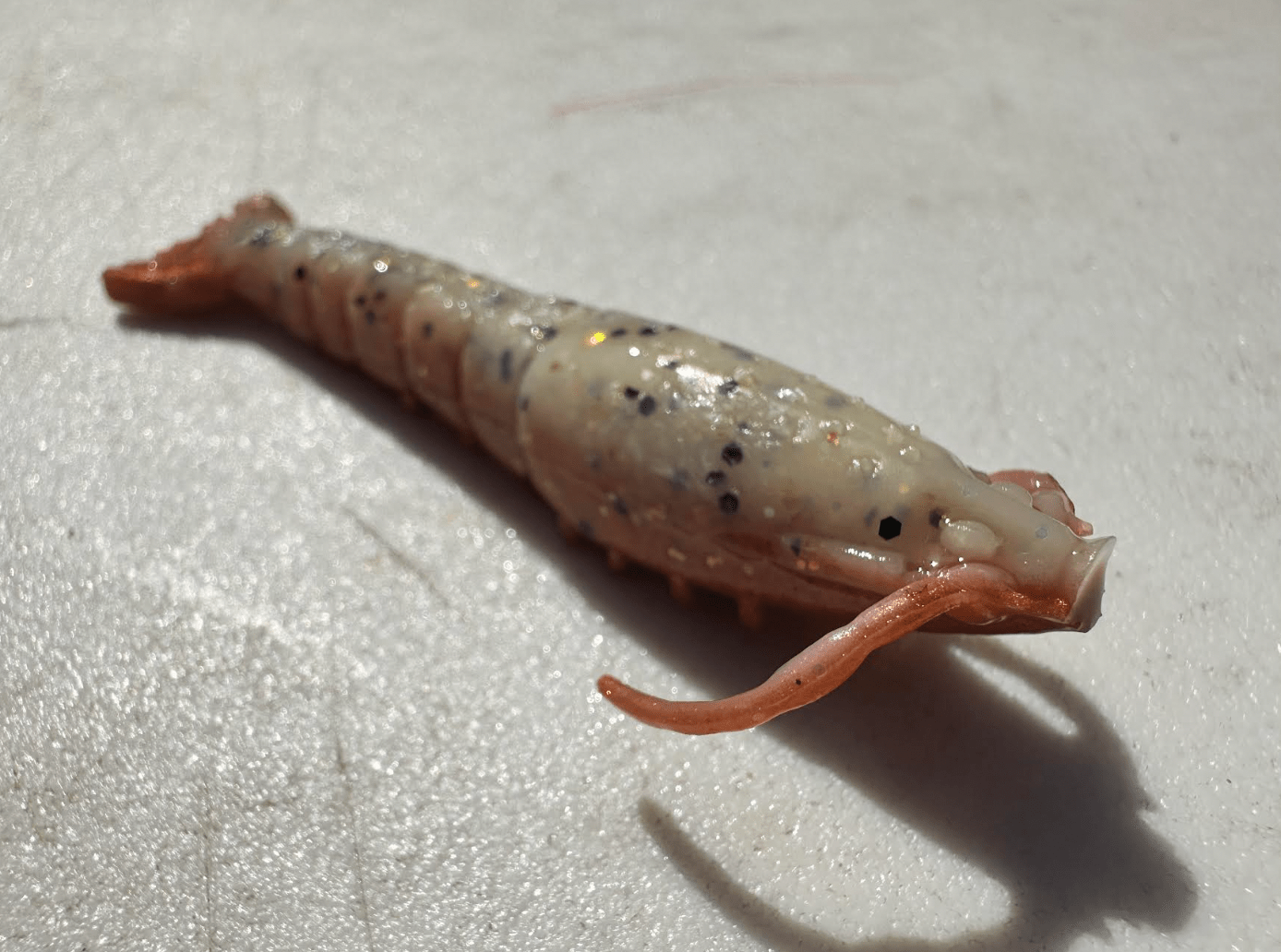The 7 Best Saltwater Lures of All Time
We may earn revenue from the products available on this page and participate in affiliate programs. Learn More ›
It would be easy to assume that with such a variety of species swimming in the bays and inshore waters of the U.S. you’d need a book to cover the best saltwater lures. That couldn’t be more untrue.
Interestingly, saltwater predators pretty much eat the same foods and hunt them in the same way from Australia to America, Bali to Bermuda. Therefore, it’s possible to drill down a list to seven little lures that will hammer salty fish just about anywhere you go.
From striped bass in the Northeast, to redfish in the south, to calico bass on the West Coast, there are one or more baits presented here that will work.
Seriously, if your target species chases and eats baitfish, shrimp, or squid, this list has you covered. Sure, you might find niche lures or local favorites along the way that produce, of course, but don’t ever get caught without these staples in your kit.
- Bucktail Jig
- Hopkins NO=EQL
- Storm WildEye Swim Shad
- Heddon Super Spook
- Popper
- Shallow-Diving Plug
- Berkley Gulp! Saltwater Shrimp
How I Picked the Best Saltwater Lures
I was born and raised in the Northeast and I’ve fished for everything that swims up here. I’ve also chased saltwater fish on the West Coast and in the Gulf. Along the way I’ve met and interviewed a ton of diehard anglers, and I’ve learned a lot from all of them.
So the lures that I’ve included here are all versatile baits that I’ve had success with through the years. I’ve listed the basic lure designs, but also made brand specific picks for each category. In my opinion, the brand you go with matters less than the type of lure you choose and the conditions you’re matching it with. So, go with the brands that you have the most confidence in, but make sure you’ve got these seven lures in your box anytime you hit the salt.
Bucktail Jig
Pros
- Extremely versatile
- Catches any fish that swims
Cons
- Doesn’t hold up well to toothy fish
Key Features
- Heavy lead head
- Strong hook
- Deer hair tail
Look at the bucktail jigs in the accompanying photo. They’re extremely boring, right? Nothing about them will grab your eye on a tackle shop shelf. They’re not flashy, glitzy, modern, or sexy in any way, yet they are arguably the best example of a lure designed to catch fish, not fishermen. Simply put, there are very few species of saltwater fish that will not take a shot at a bucktail jig.
These lures come in all kinds of color combinations, which is a little fun at least, but I’ll be the fun police and tell you nothing beats all white. Why? Because pretty much every baitfish that swims around the globe has a white belly. Shrimp, squid, and a variety of other forage species have white tones, too. So potent is a plain white bucktail that they used to be included in Naval pilot ditch bags in case their planes went down, and the pilot became stranded on a distant atoll.
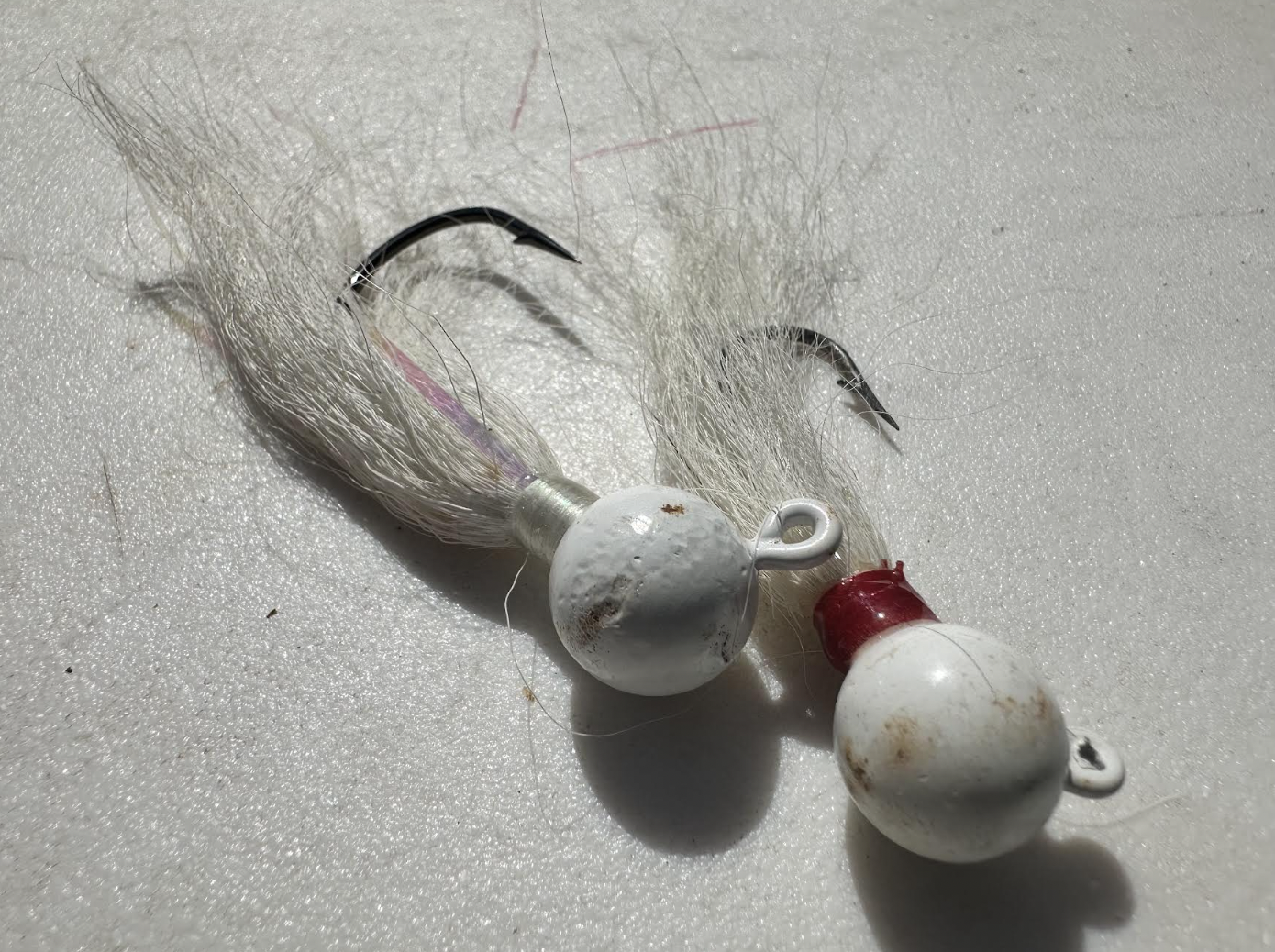
All you really have to worry about is choosing the correct weight for your bucktail. In 100 feet of water or more you might need an 8- or 10-ounce model; on the flats or in the back bay where light tackle rules, a ¾-ounce bucktail would be more appropriate. Cast and reel fast as you pop the rod tip, bounce them vertically off the sea floor, or hop them around offshore wrecks and reefs. The bottom line is there’s almost no wrong way to work a bucktail. You can also tip them with natural bait strips or soft-plastic lures to ramp up scent and flutter.
Hopkins NO=EQL
Pros
- Impervious to predator teeth and getting banged off hard structure
Cons
- Weight makes it difficult to finesse when fish are working high in the water column or at the surface
Key Features
- Hammered metal body
- Flat profile
To tell you the truth, if I were stranded on an island, I’d prefer to have a Hopkins NO-EQL instead of a bucktail jig. That’s not because a Hopkins will catch more fish, but because it can take so much more abuse. I have Hopkins in my arsenal that I bought more than 20 years ago. As long as you give them an occasional polish and replace the hooks and split rings as needed, this lure can catch fish for a lifetime.
A Hopkins will cast a mile, making it great for boat or surf pursuits. Because of its flat profile, it has a seductive wobble when reeled quickly. Likewise, this lure is heavy, and works very well when jigged vertically for fish in deeper water. The same flat profile that makes it wobble also makes it flutter down when you pause, mimicking a dying baitfish and an easy meal.
If there’s one downside to at Hopkins, it’s that it can’t be paused or finessed in the zone like other lures, as it needs constant movement to perform. However, when fish are feeding on baitfish tight to the bottom, such as during the sandeel migration in the Northeast, slowly dragging a Hopkins across the soft sand is a killer technique for striped bass.
Storm WildEye Swim Shad
Pros
- Requires minimal skill to use
- Mimics a wide variety of baitfish
Cons
- Easily destroyed by predators with teeth
Key Features
- Kicking paddle tail
- Internal jighead
Prior to the introduction of the WildEye Swim Shad, soft-plastic swimbaits could be rather expensive. They also often required the angler to purchase weighted jigheads separately and rig their baits themselves. But the WildEye changed that with a uniquely designed jighead that was molded right into the bait. Factor in Storm’s ability to produce a wide range of colors and holographic finishes that weren’t readily available prior and it’s fair to say this lure changed fishing forever.
How do you score with a Swim Shad? Cast it out and reel it back in. That’s it. You can, of course, jig them vertically, change up the rhythm with pauses and rod ticks, but if you simply cast and reel the wide paddle tail will do all the work. As it kicks rapidly from side to side it sends out massive vibrations fish can feel, even in stained or dirty water. Don’t feel like casting and reeling? These lures even work well on the troll.
Storm smartly made the WildEye Swim Shad available in a plethora of sizes and colors so you can match anything from a big adult menhaden to a pilchard to a small mud minnow. Whether I’m fishing for striped bass in the bay, mahi-mahi 30 miles offshore, or flying to Mexico to chase a mixed bag of fish, I wouldn’t go without at least a handful of Storm Shads in the 4- to 6-inch range.
Heddon Super Spook
Pros
- Excellent for targeting sound-oriented hunters like seatrout and striped bass
Cons
- Doesn’t perform well in rough conditions
Key Features
- Internal rattle
- Cigar-shaped body
The Heddon Super Spook is one of the most universally successful topwater lures ever made. During the retrieve it glides from side to side across the surface while its internal rattle clicks and clacks away. Whereas some topwater lures perform best when given a choppy, erratic action, a Spook draws its power from a steady, rhythm cadence.
Despite its ability to hammer sound-oriented hunters like seatrout, weakfish, striped bass, and snook, it does have a few minor flaws.
For starters, fishing a Spook is not intuitive. It takes a little practice to master the rod work. You want to keep your rod tip low to the water as you steadily take in line, but simultaneously impart snapping—but not overpowering—down strokes of the rod. This technique allows the lure to cruise back and forth on a slack line before the next snap advances it forward. The other critical thing to know about the Spook is that it likes calm surface conditions.
If the water is too choppy or roiled, it can be very difficult to produce that signature sliding cadence going. This is one reason why anglers across the U.S. associate good Spook fishing with early mornings when the water is like glass. The quieter the surface, the more pronounced the sound of the lure is, too, giving it more power to draw gamefish in from a distance.
Popper
Pros
- Has the ability to call fish in from a distance
- Creates incredibly exciting bites
Cons
- Not as versatile
Key Features
- Concave mouth designed to gather and throw water
The popper shown here is the Tactical Anglers Crossover Popper, which is one of my personal favorites. However, many brands make excellent poppers designed to withstand the strength of hard-fighting saltwater fish. Except for minor aesthetics, popper designs are pretty ubiquitous from maker to maker, so, find the one you like and then always have it in your bait box. You may not need it all the time, but when the opportunity arises, you’ll be glad you’re equipped.
Poppers are one of the oldest styles of topwater lure. They float high on the surface and feature a concave mouth design to the gather and throw water in all directions—known as “spitting”—when you advance them forward. The basic retrieve is very simple. Cast out and reel back imparting hard sweeps of the rod tip to get a popper chugging. You can vary the speed and cadence, pausing and stopping or working faster, based on how the fish are reacting.
Watching a popper get smashed is amazing. However, these lures tend to work best when fish are already visibly feeding at the surface, slashing, and chasing baitfish. Don’t misunderstand, a popper will call a fish up when there isn’t surface activity, but it’s rare I tie a popper on before I see boiling fish. Point being, while we all want poppers to work all the time, they tend to be situational baits. Just make sure that when surface chaos erupts you have one at the ready.
Shallow-Diving Plug
Pros
- Work well in calm water and areas with swift tidal current
Cons
- Lighter weight can limit cast distance
Key Features
- Hard-plastic body, diving lip
Like poppers, countless lure brands produce diving plugs for the salt that reach depths of 3 to 5 feet. One of my favorites and a relative newcomer to the market is the Daiwa Salt Pro Minnow. But you’ll have no trouble finding similar lures in a variety of price ranges from brands like Yo-Zuri, Bomber, and Rebel. Although you may find reason to use smaller or larger plugs, those measuring 5 to 7 inches are considered the most versatile for many saltwater species and scenarios. Likewise, you’ll find plugs that dive as deep as 25 feet, but it’s rare you’ll need something that gets down farther than five feet. If the fish are much deeper than that, you’ll probably want a heavy metal lure or bucktail jig to reach them more efficiently.
The lip of a diving plugs creates resistance as you reel, which drives the lure below the surface. The deflection of water against that lip also gives the lure a tight, side-to-side wobble. But to achieve this action, diving plugs are usually hollow, so they float, which makes them light. You won’t be able to bomb one as far as a metal lure.
Diving plugs are staples in surf fishing when striped bass, snook, and redfish are feeding close to the beach. They are also great in areas of strong tidal current, as you can cast out, crank a few times to let the plug dig, then let your line sweep around in an arc. The resistance created by the current alone is enough to get the lure wiggling, making diving plugs ringers in inlets, around jutting points, bridges, or any other area where gamefish ambush when the tide is running hard.
Berkley Gulp! Saltwater Shrimp
Pros
- Very versatile, can be rigged and presented in a multitude of ways
Cons
- Easily destroyed after catching a few fish
Key Features
- Potent scent that appeals to a wide variety of species
There are dozens of bait styles available in Berkley’s Gulp! line-up, but the Saltwater Shrimp is one of their biggest sellers coast to coast, and for good reason. Countless inshore species eat shrimp, and since the Gulp! line launched, its top-secret scent formula has proven itself dang-near as good as natural bait. In very little time, the Saltwater Shrimp became a staple in the tackle bags of anglers across the Gulf and Southern U.S. who were chasing redfish, flounder, and seatrout. However, this lure’s power extends well beyond this region.
In the Northeast, Gulp! Shrimp put a hurt on fluke, weakfish, and even schoolie-sized striped bass. Most commonly, anglers rig them on a jighead and hop them along the bottom, however, because they’re so light, they also work very well as a teaser. Fluke and flounder anglers using bucktail jigs will often rig a second hook higher up their leader and let a Gulp! Shrimp bounce and flutter around over the jig. Quite often, it’s the smaller teaser riding higher in the water column that makes the play.
One of the best presentations, though, is hanging a Gulp! Shrimp on a jighead below a popping cork. These large foam floats feature a concave top, so when you snap the rod tip, they chug and churn up the surface. The sound draws fish over for a look, and when they come to investigate, they find the shrimp riding a foot or so below the cork and can’t resist slurping it down.
Read Next: Best Redfish Lures
More Saltwater Lures Worth Considering
If seven lures just isn’t enough check out these other proven baits:
- MirrOlure 52MR
- Luhr Jensen Krocodile Spoon
- Berkley Gulp! Paddleshad
- Rapala CountDown Magnum 18
- Nomad Design Streaker Jig
- Tactical Anglers SubDarter Smart Lure
- D.O.A. Deadly Combination
First question: where are the fish feeding? If the fish are primarily on the bottom, then a spoon or jig might be the best choice. If the fish are closer to the surface, a hard plastic or topwater lure doesn’t sink as fast as a jig or spoon. Next, observe the bait the fish are eating. Are you marking anchovies on the fish finder? Can you see mullet swimming nervously on the surface? Match the lure shape and size to the local forage. A long, silver spoon looks like a narrow baitfish while a bushy bucktail has the wider profile of a menhaden, shad, or squid. Hard plastic lures are molded to perfectly match a real fish’s color, size, shape, and appearance. The last step is trial and error. The best test is to tie on the lure, cast it out, and see what the fish think. —Ric Burnley
Once you have figured out what type of lure to use, you’ll want to know what color lures are most effective in saltwater. The natural answer is to match the color of the bait the fish are eating. Use a pink lure for shrimp, black back and silver belly for mullet, blue over silver for anchovies or menhaden. This doesn’t explain some of the most popular lure colors, such as pink and green, redhead with a white body or chartreuse. —Ric Burnley
If you’re a freshwater angler coming over to the salt, you probably wonder if spinnerbaits are good for saltwater. Spinnerbaits are one of many crossover lures between saltwater and freshwater. Anglers use spinnerbaits to target redfish and striped bass. One of the most popular blade baits for saltwater fish is the Z-Man Chatterbait. Picture a jighead and soft plastic tail with a quarter-sized blade clipped to the nose of the jighead. The soft plastic tail swims like a baitfish, and the flashing blade makes the lure vibrate violently. The Chatterbait is easy to use, just cast it out and reel it in—the blade does all the work. The Chatterbait has proven effective on a wide range of saltwater fish, including redfish, speckled trout, and striped bass. —Ric Burnley
Final Thoughts on the Best Saltwater Lures
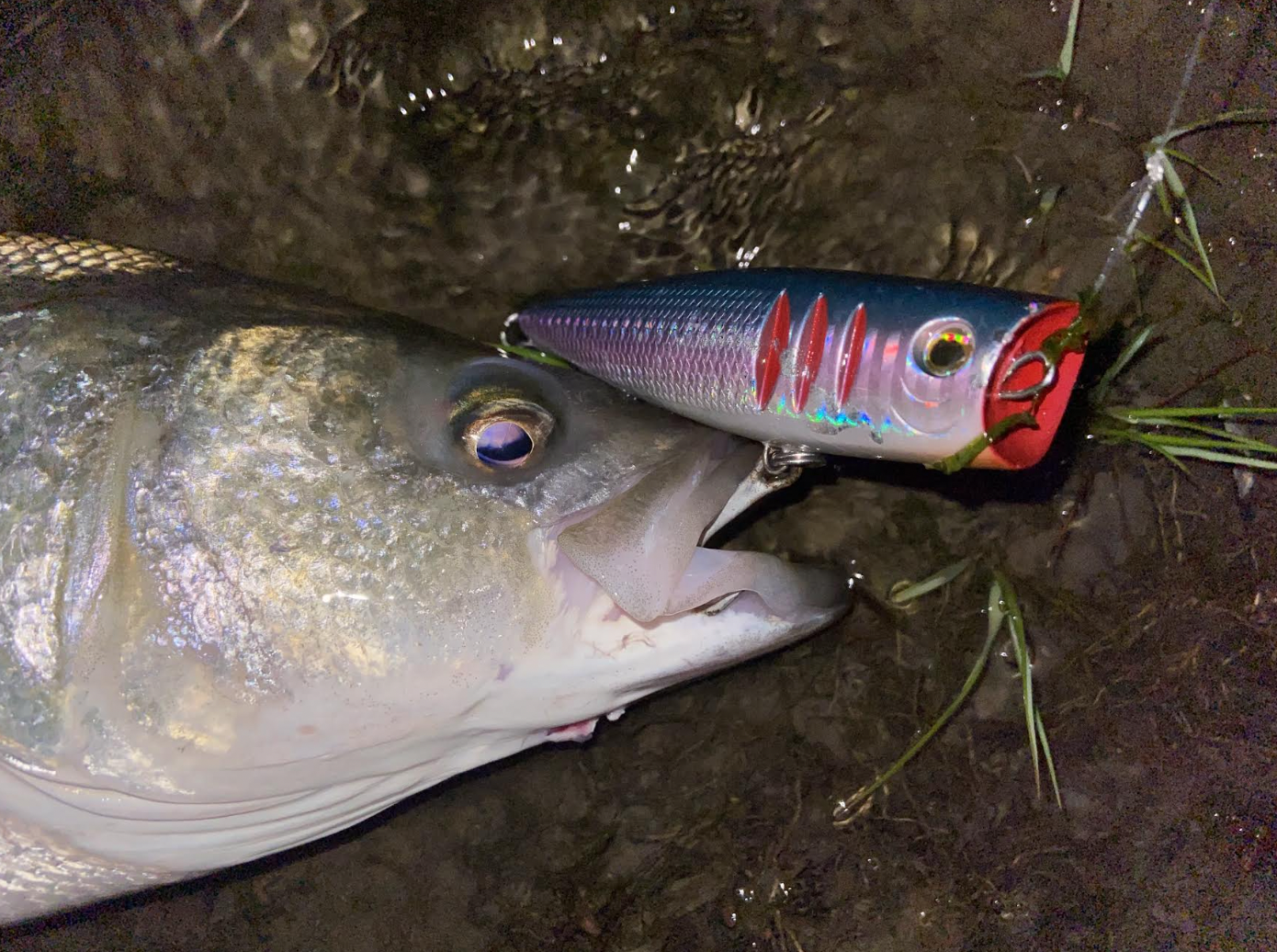
In selecting seven lures for this story I opted to prioritize versatility. All of these lures will work for a variety of species. While I admit there might be some niche lures that are better suited for specific conditions, I feel confident that the roster of lures I selected here are the best for a wide variety of conditions and fish. So start with these seven saltwater lures and then build out your arsenal from there.
The post The 7 Best Saltwater Lures of All Time appeared first on Outdoor Life.
Source: https://www.outdoorlife.com/gear/best-saltwater-lures/

